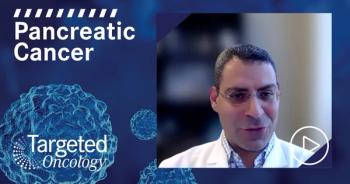
Treatment Limitations in DLBCL
Nathan H. Fowler, MD:We’ve been getting better and better at predicting who will do well with transplant. As I mentioned, it’s now pretty clear that if patients fail to achieve a complete remission or a very good partial remission with their salvage therapy, they generally, unfortunately, don’t do that great with typical autologous stem cell transplants. There are some data that suggest that using some of the newer regimens with transplant could potentially overcome some of these resistant profiles. But in general, the thought is that we really have to get patients into at least a very good partial remission before going into transplant.
That brings up the next question: How many of those patients who we give salvage therapy to will actually get to a decent remission and go to transplant? Data suggest that it’s probably somewhere around 50%. Now, that 50% includes patients who either were not healthy enough to get salvage therapy or were not able to achieve a remission. So this is a pretty big unmet need. About half the patients who relapse, unfortunately, will not go to a transplant either because they’re not healthy enough to get to transplant or we can’t get them into a remission.
This really brings up a goal. What a lot of us are doing in clinical practice and in academic research is trying to identify regimens for this patient population, either regimens that are potentially less toxic than traditional salvage chemotherapy autologous stem cell transplant or regimens that will work in these patients who, unfortunately, are still of great performance status but for whom the salvage regimens don’t work. This means trying to identify, for example, regimens that target different mutations and regimens that maybe use different drugs from the ones we typically use to overcome these, unfortunately, resistant profiles that can occur in patients in the relapsed setting.
If all goes well, and patients achieve at least a good partial remission prior to transplant and then go on to transplant, the odds are that a significant portion of those patients will achieve a long remission. What does that mean? Essentially, a cure. About half those patients who go on to autologous transplant after salvage therapy will probably never relapse, and that’s great news. Unfortunately, about half of patients still relapse. That means even though they achieve a remission and go on to a transplant, at some point after the transplant that lymphoma comes back. And that is also, unfortunately, a huge unmet need.
In the past, we would often treat those patients with things like allogeneic transplant. This would be a transplant from a donor instead of using their own cells. Many times, we would expose them to other salvage regimens to try to control the tumor. Sometimes we would use radiation to symptomatic areas, and many of those patients would go on to clinical trials, again looking at or exploring regimens that potentially would exploit some novel mechanism in order to overcome some of the resistance that, unfortunately, led to relapse after transplant.
Transcript edited for clarity.









































